Offshore underwater structures face some serious challenges: harsh environments and operating conditions can cause fatigue cracking or corrosion, leading to potential problems. That's why it's so important to regularly inspect, monitor, and repair these structures to ensure they operate safely. But here's the thing... conventional inspection techniques face significant challenges when it comes to subsea structures, particularly when it comes to accessing the areas of interest; removing marine growth and safely using remotely operated vehicles (ROVs) can be time-consuming and problematic.
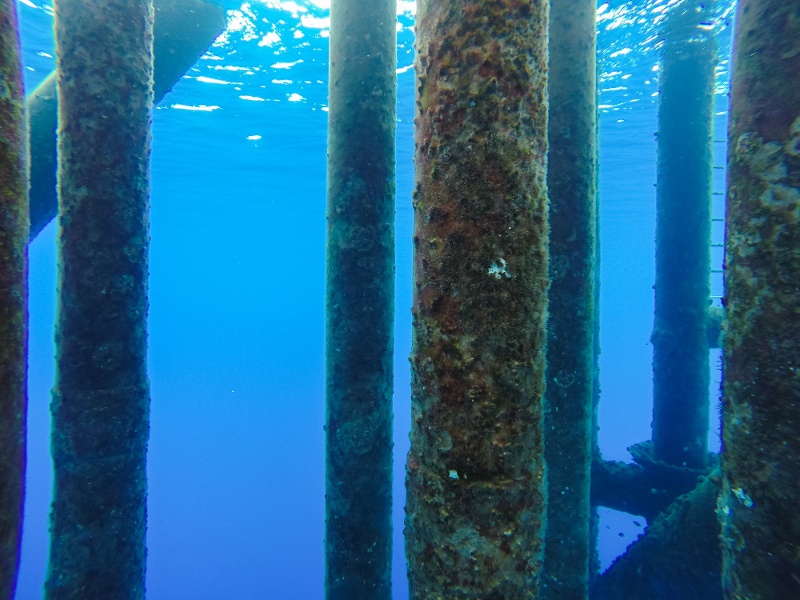
Fortunately, there's a technique that's no stranger to the offshore industry: long-range ultrasonic testing, or LRUT. This preferred inspection technique is ideal for situations where access is limited and long lengths require scanning. By using guided waves sent over a long distance from a single collar location, this method overcomes the challenges of conventional inspection techniques. The guided wave ultrasonic testing data provides an easy-to-interpret graphical representation of potential vulnerabilities within the capital asset or critical component under investigation. So, it's clear that long-range ultrasonic testing is a gamechanger when it comes to inspecting subsea structures. Let’s take a closer look!
Offshore Riser Inspection
Offshore risers are subjected to a harsh and volatile environment that can potentially cause severe damage to their structure. Corrosion, marine growth, wave action, and storm damage are just a few of the many challenges that offshore risers encounter. A rupture in a riser can have catastrophic consequences for both the environment and the health and safety of those working on the platform. Therefore, routine inspection of risers is crucial.
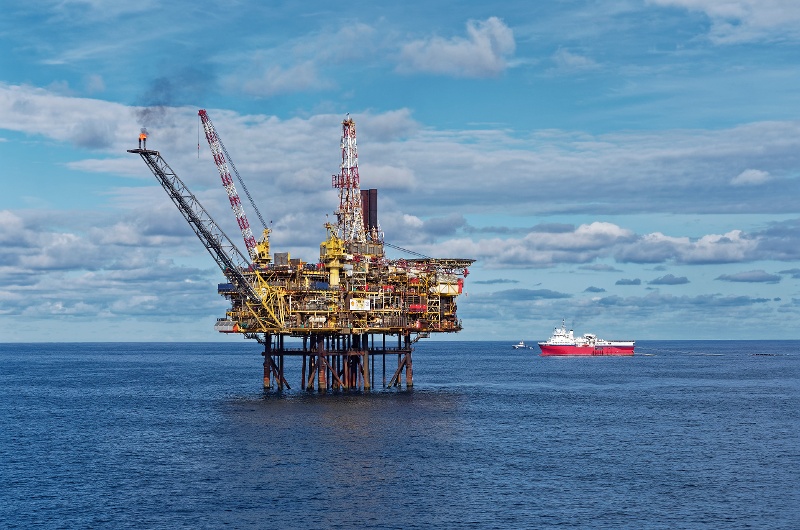
Traditionally, riser inspection was conducted using special "intelligent pigs" that carry NDT sensors vertically down inside the riser to detect damage on the outer and inner surfaces. However, this method is time-consuming, requires bulky equipment, and is expensive, especially for underwater inspections. Additionally, inspection from the outside is impossible in the splash zone.
Guided wave ultrasonic testing (GWUT or GWT) technology offers significant advantages for riser inspection. It enables the monitoring of internal and external corrosion with only one access point required above the sea and below the flange that attaches the riser to the platform pipework. The riser flow line does not need to be detached from the riser like in the case of introducing a "pig." The inspection is conducted in a single test with data gathering taking less than five minutes.
The success of GWUT technology by Eddyfi Technologies has been demonstrated in various offshore riser inspection projects worldwide. For example, BG International employed the GWT technology for the inspection of the risers required for accurate assessment of condition before entering service. The design of these risers called for them to be completely sealed inside caissons during fabrication. What is known as the Sonyks™ today was used to overcome the challenge of accessing the risers in their pristine state so that their condition could be compared with a digital twin, and any degradation due to corrosion could be detected. Call it twinning!
Sonyks guided wave ultrasonic testing technology was also used for the inspection of risers on the Cleeton platform, where all four risers had adequate access and surface preparation for good inspection conditions. Similarly, in the South China Sea, Eddyfi Technologies GWT technology was successfully used for the inspection of risers.

Figure 1: Cleeton Tower Riser Inspection with GWUT Solution
In summary, GWUT technology is a proven and successful method for the inspection of offshore risers. It offers several advantages over traditional inspection methods, including a single test with data gathering taking less than five minutes and the ability to monitor both internal and external corrosion with only one access point required.
Caisson Inspection
While originally designed to detect corrosion under insulation in petrochemical plant pipework, guided wave testing has since evolved and is now suitable for a wide range of applications, including risers as mentioned but also caissons. This type of inspection is particularly challenging due to the similar harsh environment and elements that these structures are exposed to, including seawater, biofouling, and turbulent seas.
The LRUT technique is ideal for offshore riser inspections and offer significant advantages over alternative methods. Both internal and external corrosion can be monitored, only requiring an access point between the flange and sea level. The pulse-echo system designed for testing large volumes of material from a single test point is the superior candidate for pipelines that are buried, encased in a sleeve, elevated aboveground, or located out at sea, which would otherwise require the need for a diving operation.
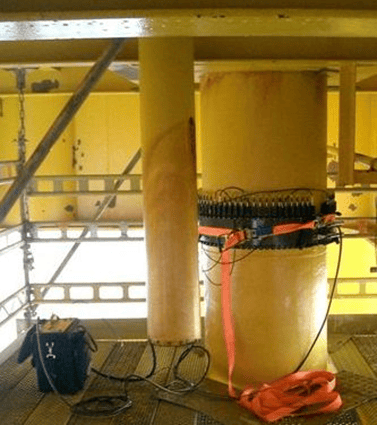
Figure 2: Guided wave testing on an entire length of a caisson from the topside
A field trial of the GWT solution was able to inspect the entire length of a caisson from the topside, despite the typical difficulty of gaining direct access. The inspection assessed the caisson's condition prior to removal and employed both torsional and longitudinal wave modes. The data results showed an increased area of corrosion in the splash zone, but still within acceptable limits.
This solution has been employed globally with great success, including assessments of risers in the South China sea and on the Neptune platform. In the latter case, direct access to the risers was no longer possible after being sealed in caissons. However, transmission of ultrasound past the anchor flanges was possible, and nine percent metal loss flaws in the splash zone were detected.
Figure 3: Barykat Platform Riser Inspection with GWUT Solution
Eddyfi Technologies offers the proven Sonyks inspection solution combined with its data acquisition and analysis software, which offers reliability and versatility for examining offshore and subsea assets like pipelines, risers, and caissons. This solution has been shown to successfully complete tests in various environments, including unmanned platforms in Mobile Bay in the Gulf of Mexico. Discover how Sonyks saves time for GWT inspections here.
Synergistic Solutions for Subsea Inspection
Bureau Veritas has developed a unique approach that combines different advanced non-destructive techniques (NDT) to maximize productivity, minimize intrusions while ensuring the data collected is the high quality needed for integrity assessment allowing for the safe operation of critical assets. By employing multiple techniques offered by Eddyfi Technologies, it combats the problem of marine growth removal. This approach not only enhances productivity and minimizes disruptions but also ensures that the inspection data gathered is of the highest quality. As a result, a comprehensive integrity assessment is conducted, ensuring the safe operation of critical assets.
The inspection approach involves a combination of Eddyfi Technologies’ LRUT technology with marinized transducer tooling, underwater Pulsed Eddy Current (PEC) testing, and underwater Alternating Current Field Measurement (ACFM®) to inspect subsea structures. The LRUT technology is initially used to screen piles for overall condition with marine growth only needing to be removed at the tool location. PEC is used to verify critical findings without removing any marine growth. ACFM is used to inspect underwater welds for fatigue cracks, all with minimal removal of marine growth. Talk about a team effort.
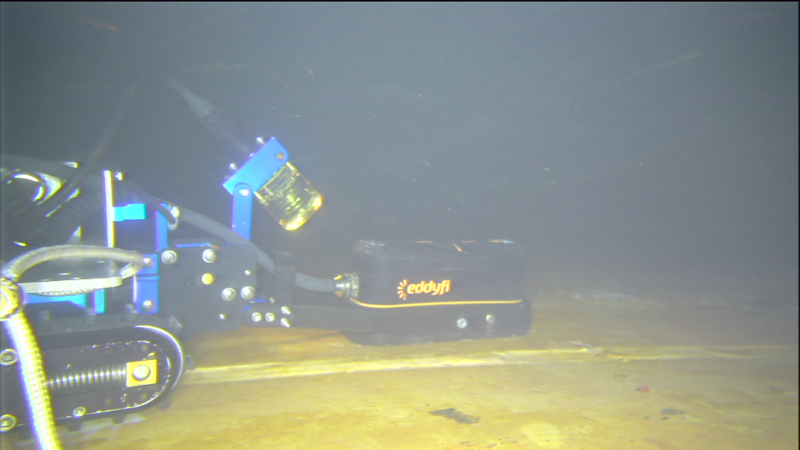
Figure 4: PEC underwater probe affixed to robotic crawler delivery system
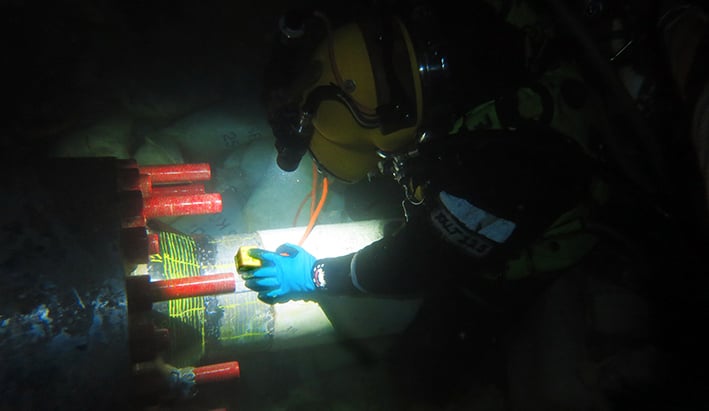
Figure 5: ACFM solution for subsea crack detection
Bureau Veritas has successfully implemented this approach to inspect approximately 1,000+ piles of circular piles with different diameters and wall thicknesses. The results were validated by cross-checking with other techniques such as underwater Ultrasonic Thickness Gauging (UTG) and Close Visual Inspection (CVI) to ensure the accuracy and reliability of the results. Follow this space for details about the challenges encountered during implementation and how they were overcome (including real site experiences and results of this innovative inspection program).
Until then, checkout the comprehensive courses offered via Eddyfi Academy for guided wave testing (and so much more) here, and if you’re interested in building an instant quote, visit our eStore! Finally, our NDT experts are only an email away and happy to answer your technical questions to keep you Beyond Current.





